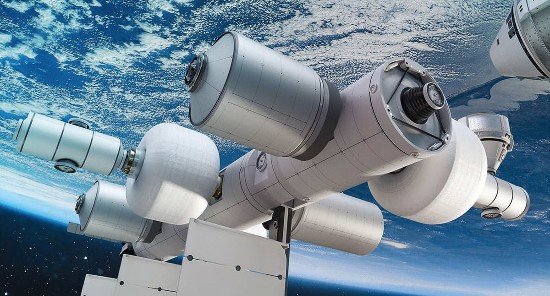What will Near-Earth space look like after 2030? The International Space Station (ISS) will reach its end of life that year and plans are in the making to bring it down to a safe end over a remote area of the Pacific Ocean. To ensure it goes where it will have the least environmental impact, NASA has budgeted about $1 billion to build a space tug that will assist in the deorbiting maneuver, and later will be used for other ferrying jobs in near-Earth space. The original plan had Roscosmos using a purpose-built Soyuz to do the work, but cooperation between the principal ISS partners has been strained by the war in Ukraine.
So what will NASA be doing in near-Earth space beyond 2030? The current plan has it working with commercial partners and purchasing tenancies on their space stations currently in the planning and development stages. NASA will find accommodation on facilities built by Axiom Space, Blue Origin, Northrop Grumman, Airbus, and possibly SpaceX.
The Commercial Space Station Parade Begins
Axiom Space, who in the last week revealed new spacesuits for NASA’s Artemis Program, is likely to be the first to market with a current plan to deliver the first of a number of modules to dock with the ISS beginning in 2025. Axiom’s plan is to take advantage and use some of the hardware aboard the ISS in the building of a cost-effective successor station which will become a home for multinational use. The Axiom modules will detach from ISS to become a self-contained free-flying station before 2030.
Blue Origin is the lead partner of a group that includes Boeing, Amazon, and Sierra Space, who are planning to build and operate the Orbital Reef, a commercial station open to all that will be launched by 2027.
Starlab is a partnership between Voyager Space and Airbus with a plan to put a station into orbit by 2028.
Northrop Grumman is the company building the Lunar Gateway station that will circle the Moon to support the Artemis Program. But it also plans to launch a Near-Earth station by 2029.
If these companies deliver, then NASA will have plenty of accommodation options for near-Earth while it turns its focus to the Moon, Mars and other Deep Space projects.
What About SpaceX?
As for NASA’s current principal commercial partner SpaceX, does the latter have plans to build and operate a station in Near-Earth orbit? SpaceX, today, ferries astronauts to the ISS using Falcon 9 rockets and reusable Dragon crew capsules. It also operates a resupply and return-to-Earth service for the station. The company has also been contracted by NASA to use its launch capacity using the Falcon Heavy to deliver the first two modules of the Lunar Gateway beginning sometime in 2024.
Then there is the Starship which may see its first orbital flight in the next few weeks. A modified version of the Starship will be NASA’s first lunar lander designed to ferry astronauts from the Lunar Gateway to the Moon and back. Starship is big by any standard when compared to today’s crew capsules and modules built by NASA, Roscosmos, China, in fact so big it could become a station on its own. And SpaceX has launch and delivery tools to assemble a permanent commercial station in Near-Earth space. Its other option is to work with Axiom Space with which it already has a relationship having delivered the first commercial-crewed missions to the ISS. And SpaceX will provide the launch vehicles for Axiom to deliver its first modules to the ISS.
Russia and China’s Space Station Plans
China has the only other space station circling the Earth at present. But in the future will Russia and China get together on a new project?
The Ukraine war has led to announcements by Roscosmos, the Russian space agency, that have it planning to take its cosmonauts and potentially even some of its modules home in 2024 or shortly thereafter. Since that announcement, the Russians have backtracked and likely will remain beyond that date.
If Russia does leave the ISS it will be to partner with China. Roscosmos doesn’t have the budget or capacity to go it alone in Near-Earth space. The days of Mir and the Soviet Union are long gone. But the current Chinese space station, called Tiangong, could become home for them in the future. A joint project is possible with the current space station serving as the core of an expanded facility. And because ISS prohibited China from the partnership, Tiangong or its successors, tenancies on it won’t likely be offered to NASA.








